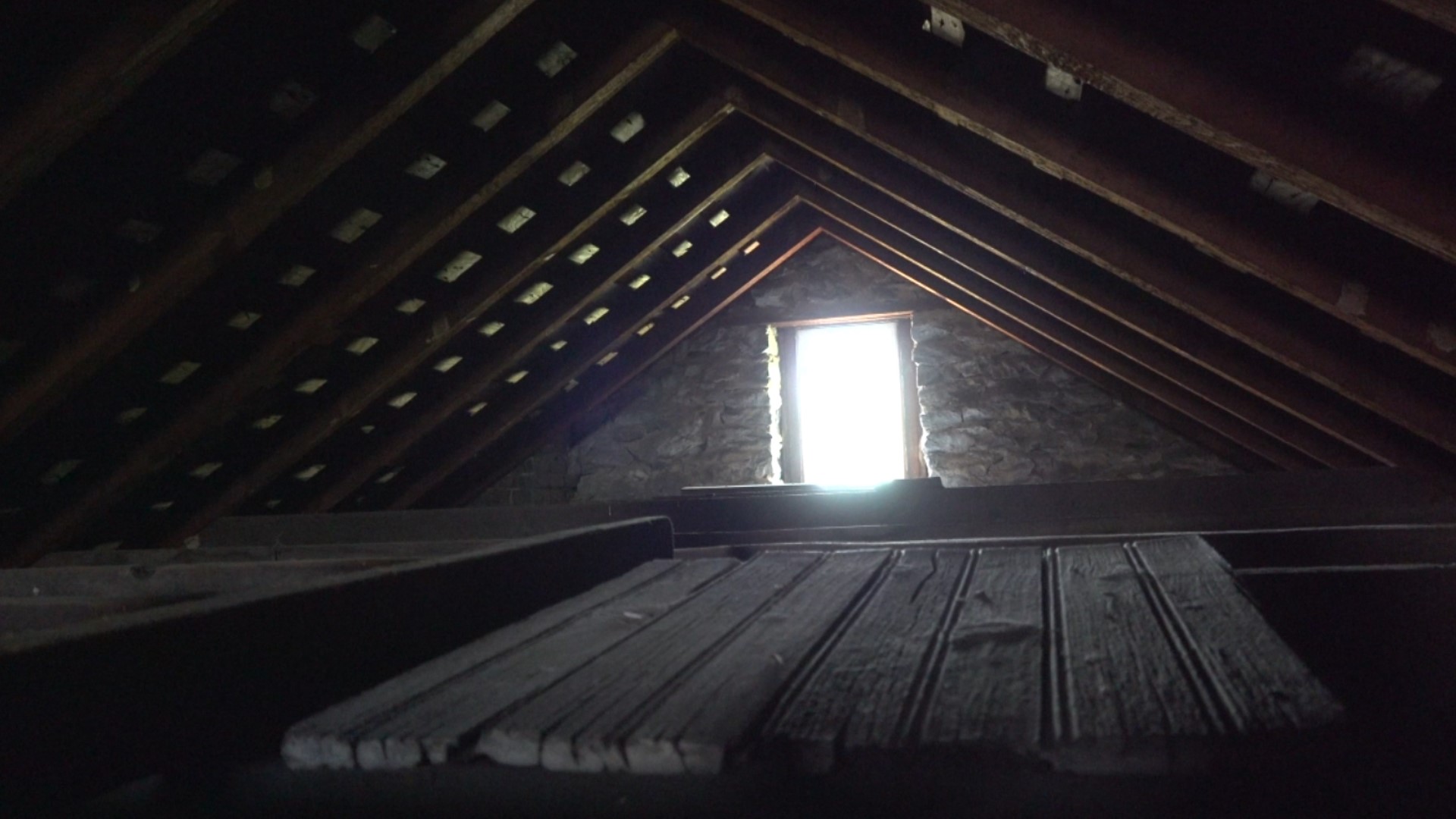WRIGHTSVILLE, Pa. — Just a few minutes from the Susquehanna River, the Mifflin farmstead now sits empty. Built in 1800, it was owned by Jonathan Mifflin, a Quaker and veteran of the Revolutionary War, and his wife Suzanna.
The property was more than a farm and house. It served as a station on the Underground Railroad, a safe location for enslaved people seeking freedom by escaping north.
It’s unknown how many people stopped at the station, but the nonprofit organization The Conservation Fund estimates more than "100,000 people escaped slavery using the Underground Railroad between 1810 and 1850."
Historians also aren’t sure where escaping enslaved people would have stayed inside the house, but there are multiple rooms that could have hidden people, such as an attic crawl space and a large root cellar.
“The thing about the Underground Railroad is that people didn’t write it down. There isn’t a lot of first-hand documentation, so it’s going to take some research,” said Mark Platts, president of the Susquehanna National Heritage Area (SNHA).
The farm was also the site of a Civil War battle just days before the Battle of Gettysburg.
The land was set to be turned into space for warehouses, which have popped up all around York County in recent years.
Then, this week, a group of preservation groups announced they had raised the funds necessary to preserve the property and turn it into a museum and historical site.
The Conservation Fund purchased the 87.5-acre property for $5.25 million, in collaboration with Preservation Pennsylvania and SNHA.
The Mifflins worked with different people over time to help people seeking freedom cross the Susquehanna River. At one point, formerly enslaved Robert Loney ferried people. Freeman Stephen Smith, who owned a lumber business, later helped by smuggling people in a train car.
“He had secret compartment," said Nelson Polite, the president of the African American Historical Society of South Central Pennsylvania. "The train would take them from here and then all the way to Philadelphia. That was a total of 80 miles, and it was in lighting speed of eight hours, at that time."
Pennsylvania was a free state, having passed the Abolition Act of 1780 that ended slavery through gradual emancipation. Many people traveling the Underground Railroad came through Maryland, where slavery remained legal.
Enslaved travelers coming from Maryland or further south went to Philadelphia or further north to Canada, especially after the Fugitive Slave Act of 1850 that made it legal to seize and return runaway slaves.
“People call it African American history, but it’s American history. It’s part of American history,” Polite said. “It happened. It’s what’s true. And it just needs to be passed on.”
The project will eventually include a visitor center and trail to the Susquehanna River tracing the route of those seeking freedom.
“That’s why this story needs to be told. The Mifflin House needs to exist so that we can move forward the story of those who were enslaved and those who were freedom seekers,” said Kelly Summerford, manager of the William C. Goodridge Center.
Restoration and renovation is expected to take five to eight years and another $10 million.

